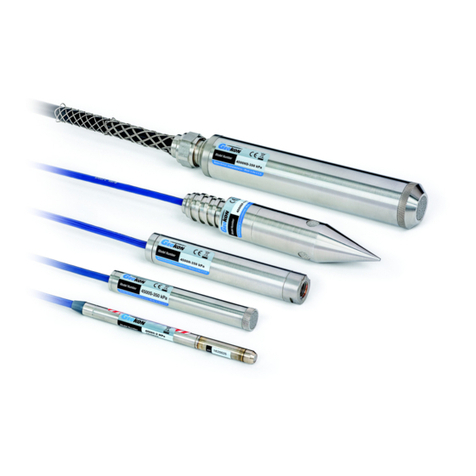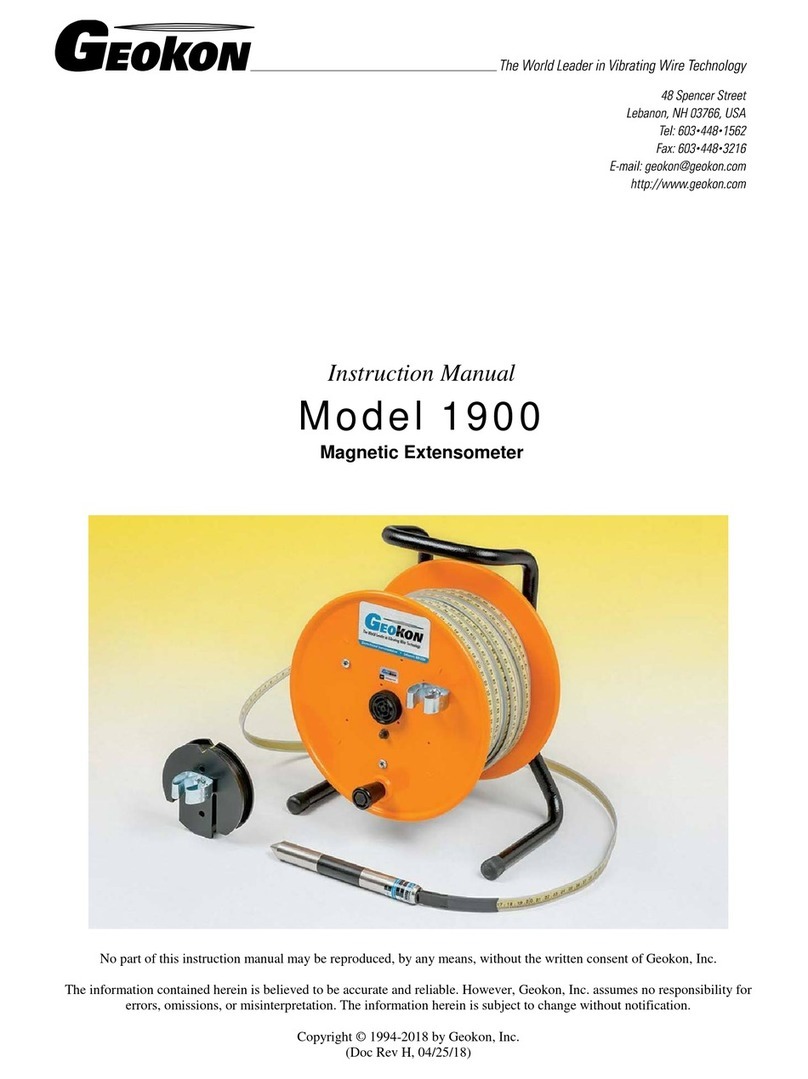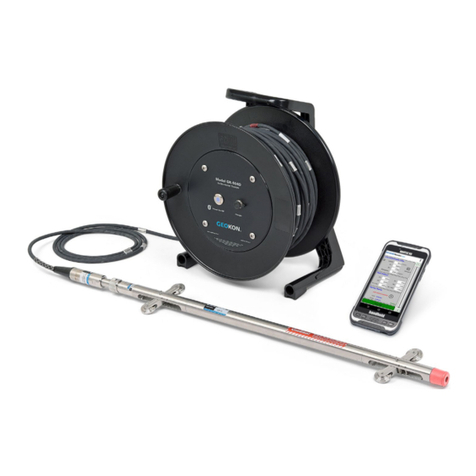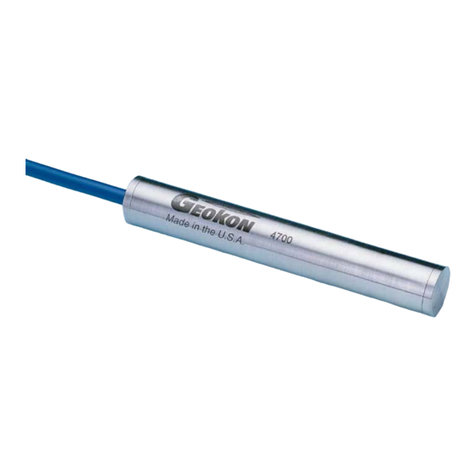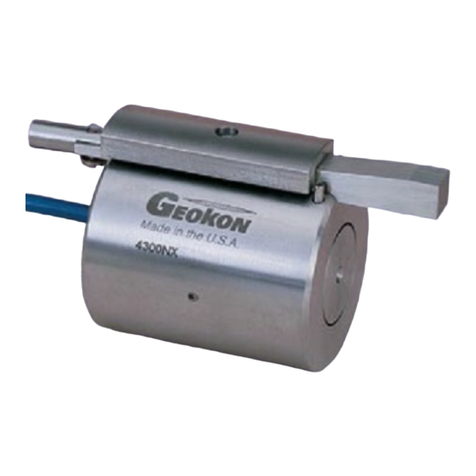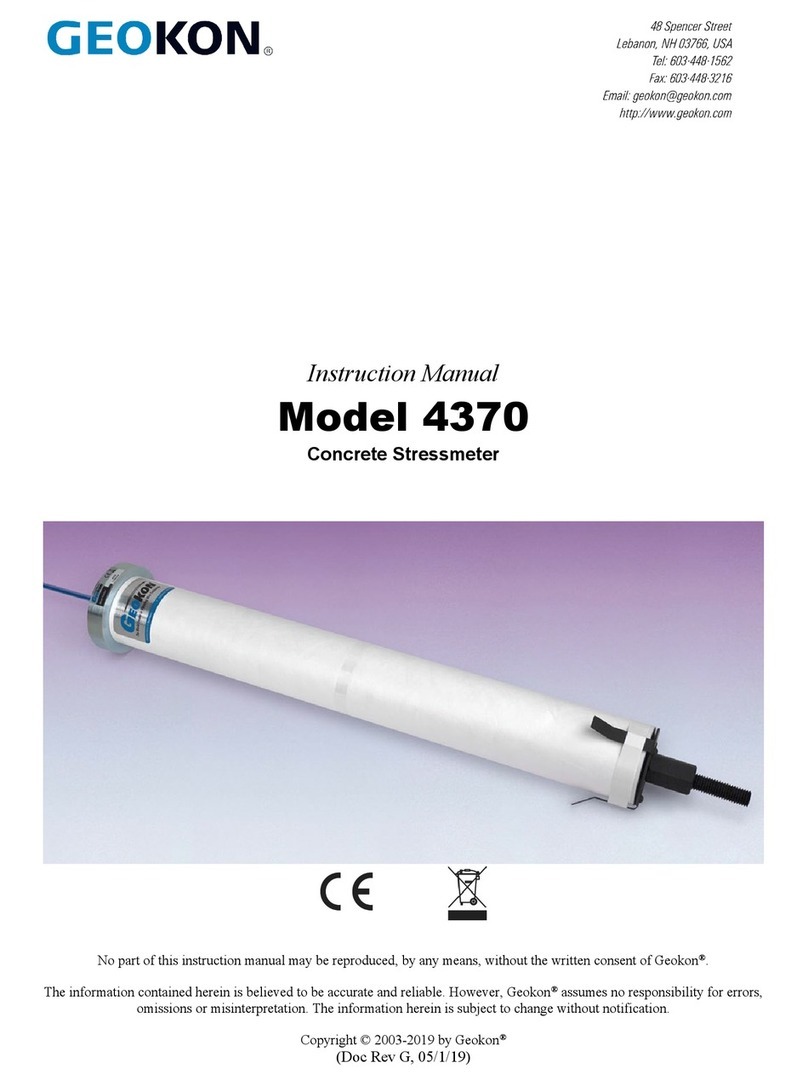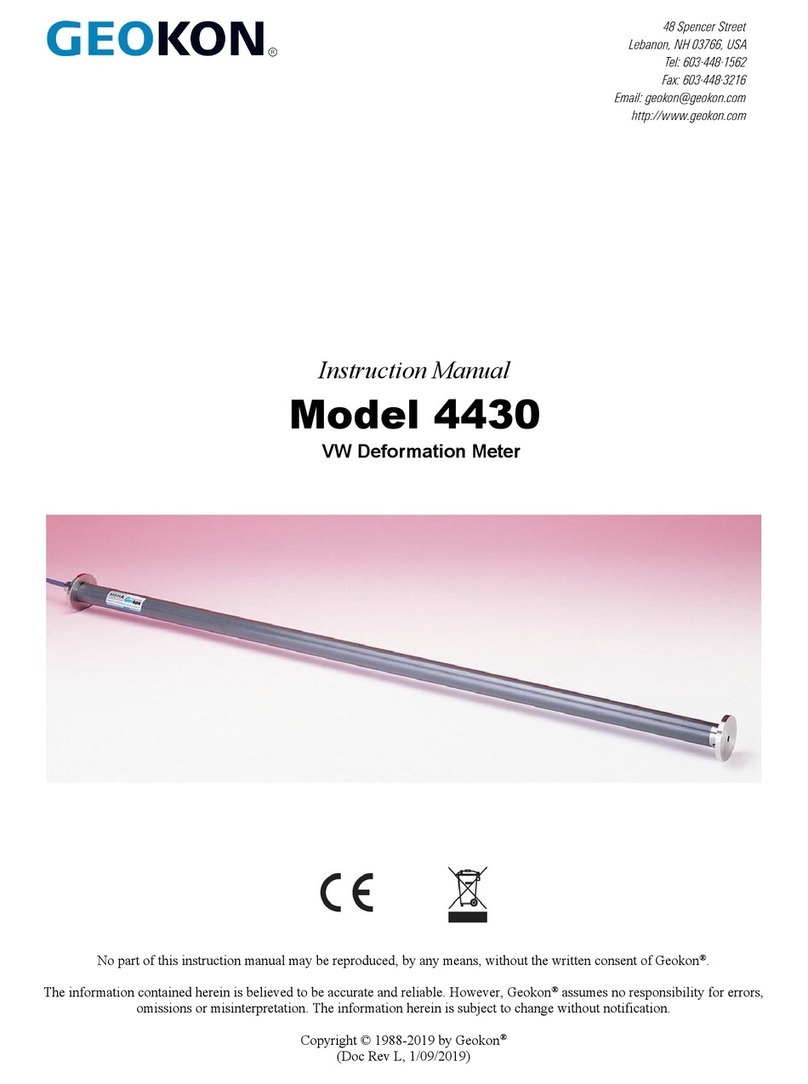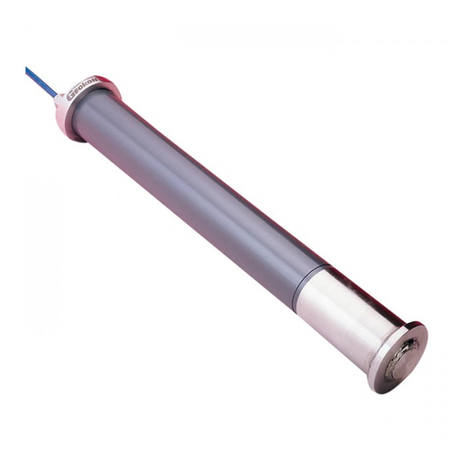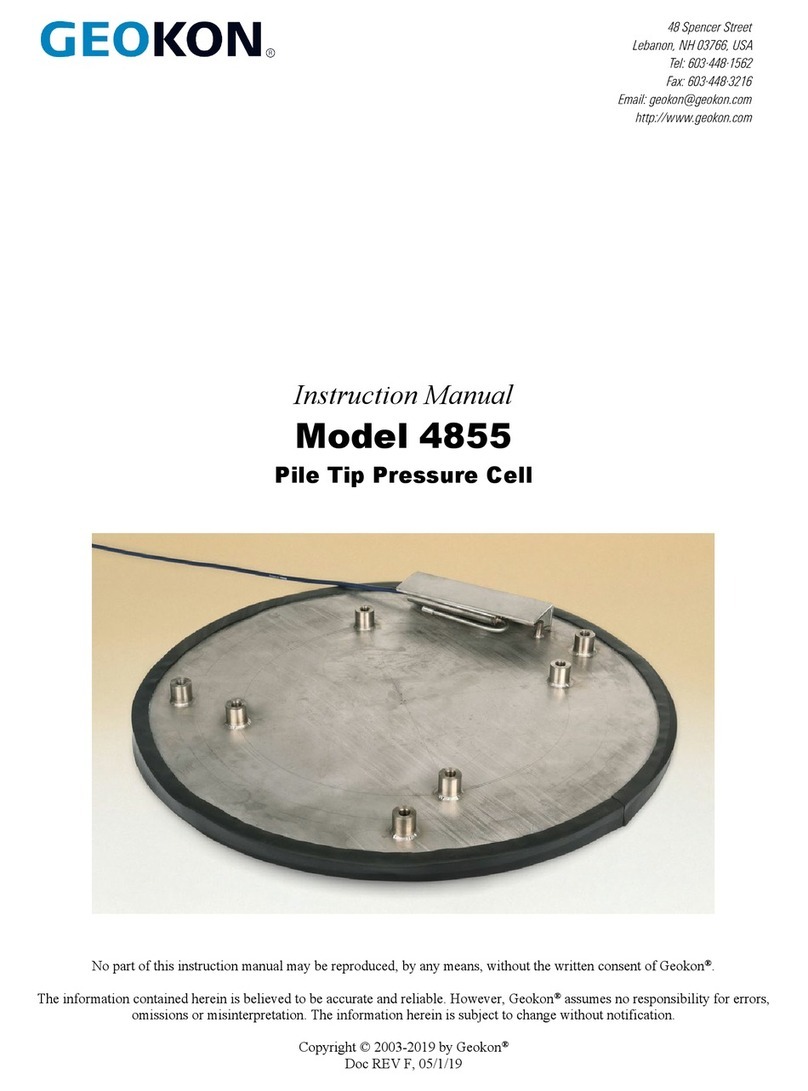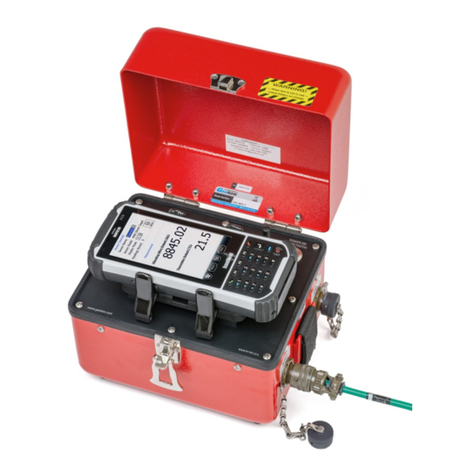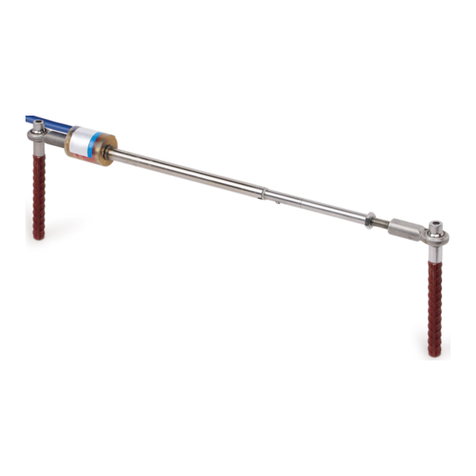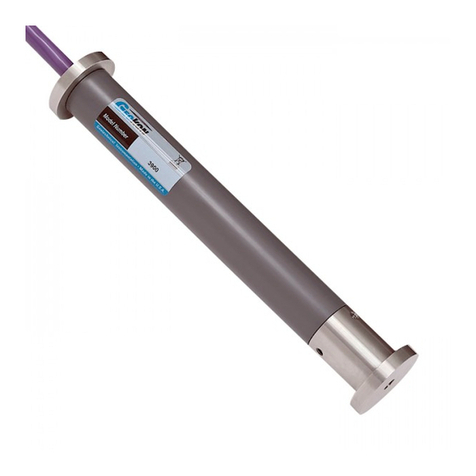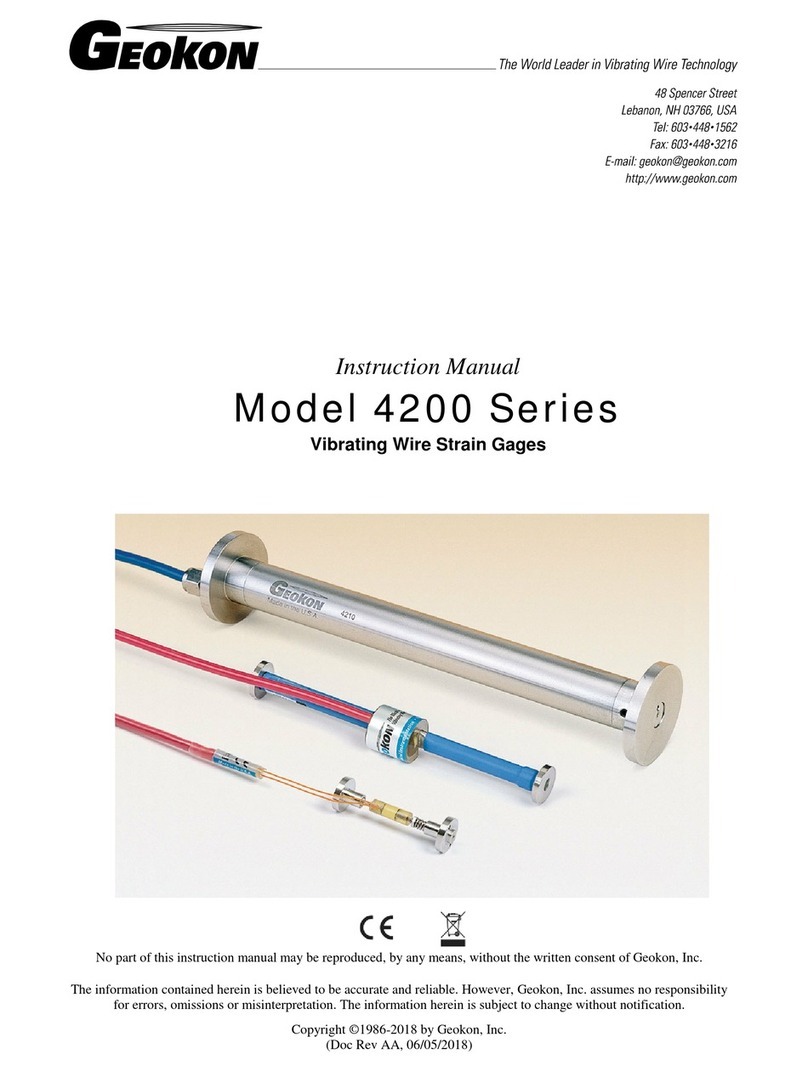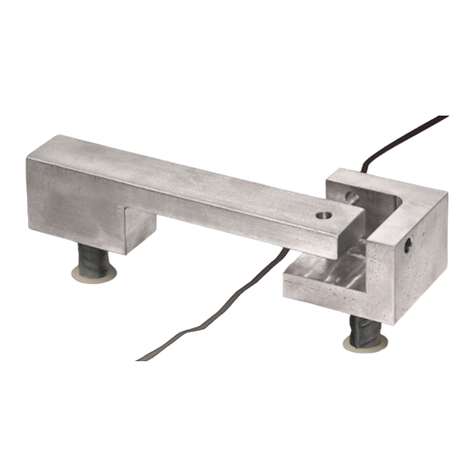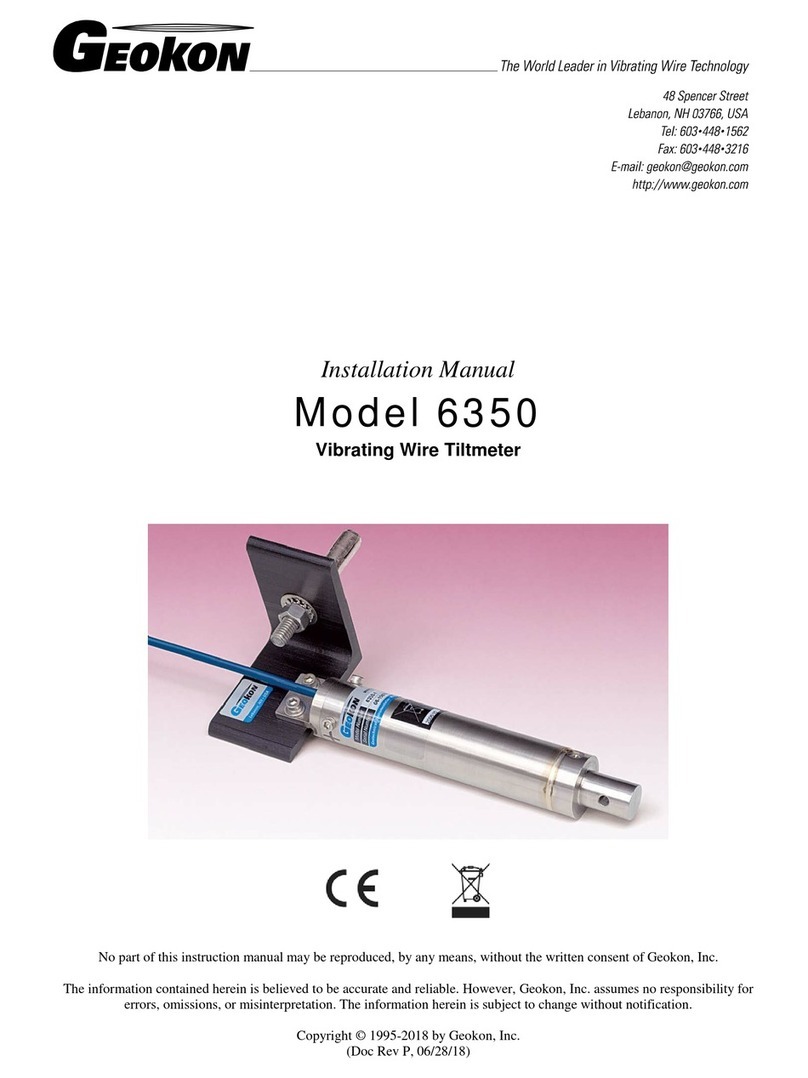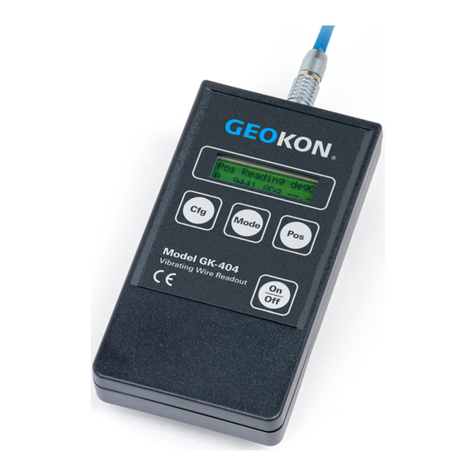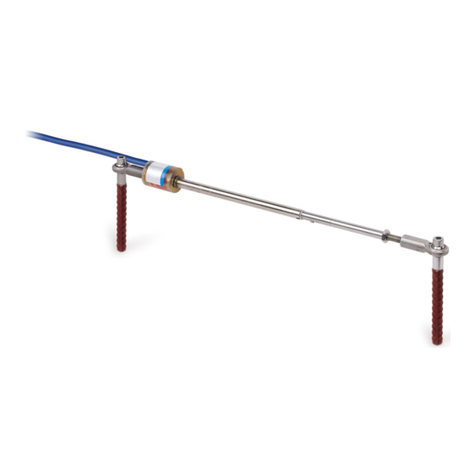
1
1. INTRODUCTION
Geokon’s 4500HT Series High Temperature Piezometers are designed for monitoring downhole
pressures and temperatures in oil recovery systems and geothermal applications. Each 4500HT
pressure transducer is equipped with a Model 4700 Vibrating Wire Temperature Sensor which
gives a varying resistance output as the temperature changes.
4500HT sensors are capable of operation under extreme conditions and at temperatures up to
250 °C. In thermal recovery applications such as Steam Assisted Gravity Drainage (SAGD) and
Cyclic Steam Stimulation (CSS) they provide accurate, real-time, continuous monitoring of
pressures in production and injection wells, thereby optimizing the recovery rate and reducing
the cost of the steam injection process. In geothermal applications, they offer a means for in situ,
continuous monitoring of pressures and temperatures over extended periods of time.
1.1 Theory of Operation
Geokon vibrating wire piezometers utilize a sensitive stainless steel diaphragm to which a
vibrating wire element is connected. During use, changing pressures on the diaphragm cause it to
deflect. This deflection is measured as a change in tension and frequency of vibration in the
vibrating wire element. The square of the vibration frequency is directly proportional to the
pressure applied to the diaphragm. A filter is used to keep out solid particles and prevent damage
to the sensitive diaphragm. Standard filters are 50 micron stainless steel.
Two coils, one with a magnet insert, the other with a pole piece insert, are installed near the
vibrating wire. In use, a pulse of varying frequency (swept frequency) is applied to these coils,
causing the wire to vibrate primarily at its resonant frequency. When the excitation ends, the
wire continues to vibrate. During vibration a sinusoidal signal is induced in the coils and
transmitted to the readout box where it is conditioned and displayed. The 4500HT sensors are
designed for static measurements only; at least one second is required to excite and read the
sensor.
All exposed components are made of corrosion resistant stainless steel. If proper installation
techniques are used, the device should have an unlimited life. In salt water it may be necessary to
use special materials for the diaphragm and housing.
Portable readout units are available to provide the excitation, signal conditioning, and readout of
the instrument. Datalogging systems are also available for remote unattended data collection of
multiple sensors. Contact Geokon for additional information.
